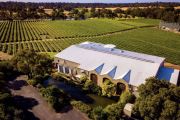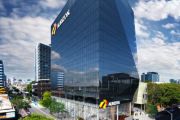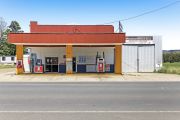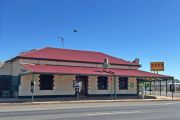
Top restaurant groups expand as diners feast on hot new venues
If you didn’t book a month ago, you won’t get a table this weekend at trendy Sydney CBD steakhouse The Gidley.
In fact, the waitlist at the restaurant on the corner of King and Elizabeth streets grows to more than 500 people on a Friday or Saturday night, and up to 200 on Tuesday to Thursday evenings, a spokeswoman for operator Liquid & Larder tells The Australian Financial Review.
It’s a similar story at the group’s Italian cocktail bar and steakhouse Bistecca near Circular Quay.
Across the country, a reliable cohort of diners is brushing off concerns about the economy, falling house prices and uncertainty about when interest rates may start to fall and are spending up big in their favourite restaurants.
Top operators are noticing the trend, giving some the confidence to expand. Despite rising operating costs, thinning margins and record levels of insolvencies in the sector – nearly 1200 hospitality businesses went broke last year, up 28 per cent – well-capitalised groups are opening new venues.
Seagrass Hospitality opened the 200-seat safari-themed Meat & Wine Co steakhouse in Circular Quay last August. It is fully booked most Thursday, Friday and Saturday nights, and has a three-week wait to book a private dining room.
Chief executive Ravi Singh said the group was on track to recoup its $2 million investment in the venue in just 14 months, and is in discussions to open four more steakhouses in Perth, Melbourne and Sydney.

The company is forecasting revenues of $200 million from its 19 venues and pre-tax earnings of $25 million to $30 million in 2024-25 – “significantly better than a few years ago”, Mr Singh said.
“We are very cognisant of the cost-of-living crisis, but we have not seen a decline in patronage across our group,” he said. “A lot of hospitality businesses are not doing as well, but we are bucking the trend.”
Reservations in December 2024 on online booking platform SevenRooms were 9 per cent higher than October.
The busier Christmas month also delivered a 27 per cent higher spend per guest, prompting SevenRooms Asia Pacific managing director Paul Hadida to declare a “very strong summer” for restaurants.
“While persistent economic pressures are real, people are still happy to pay in exchange for meaningful and memorable dining experiences,” he said.
Most Aussies are willing to spend $97 per person for a meal out, but one in six would pay up to $291 per person, Mr Hadida said.

OpenTable, another reservations platform, recorded a 9 per cent increase in “experience bookings” in 2024 – at restaurants offering unique, dining experiences such as exquisite tasting menus, wine pairings, dinner and a show and steak specials such as tomahawks.
‘Feast or famine’
Highlighting the demand for fine food, famed Melbourne restaurateur Chris Lucas said caviar sales were “through the roof” at four-level French dining extravaganza Maison Batard, which opened its doors in a refurbished heritage building on Bourke Street in November.

“People might not go out as much, but when they do, they want to have a good time,” he said.
Lucas Restaurants opened three restaurants within three months last year in a “countercyclical” move. The other two were Mediterranean restaurant Carlotta in Canberra and Japanese-inspired Tombo Den in Melbourne’s Prahran.
“All our new restaurants are trading very well which demonstrates that people are still prepared to go out, and that new restaurants are exciting,” he said.
“The surprise packet has been our Canberra restaurant, which has traded well above budget.”
But increased spending isn’t across the board. Wes Lambert, CEO of The Australian Restaurant & Cafe Association, which represents 56,000 businesses in the $64 billion industry, said conditions were either “feast or famine”.
Those still doing well, Mr Lambert said, were restaurants “at the top end of town” with reputations for world-class cuisine and at the other end of the market, fast food operators such as Guzman y Gomez.
Bearing the brunt of cost pressures, he said were mid-tier and mid-priced restaurants and cafes whose customers cannot absorb rising prices.
“I expect more premium operators will be using this time to expand as they poise themselves for lower interest rates and inflation in the future,” Mr Lambert said.
Others, such as Sydney-based House Made Hospitality, are gritting their teeth and hoping for an improvement in tradition conditions when interest rates start to fall.
The group opened five new venues in Sydney late last year: four within the revamped Sofitel Sydney Wentworth and a South-East Asian fusion restaurant Island Radio in Surry Hills’ Wunderlich Lane. A retro music bar called the Baptist Street Rec. Club on Wunderlich Lane will open in February.
Justin Newton, a director at House Made Hospitality, said all venues had been in the works for 18 to 24 months.
“If I had a crystal ball and could foresee the current conditions, I would have pulled the plug on them,” Mr Newton said.
“We’re in the midst of a fatal pinch between people having less to spend (with an associated expectation on getting more for their money) and the costs of doing business (wages, the purchase of goods, utilities, rent) increasing.”
Chasing growth
With its CBD steakhouses pumping, Liquid & Larder is also doubling down on the demand from the upwardly mobile. It is putting the finishing touches on two restaurants that will open within the new Eve Hotel in Surry Hills in late January: Lottie, a contemporary Mexican restaurant for the rooftop, and European-inspired Bar Julius in the lobby.
While rising costs are eating into profit margins and the cost-of-living crisis is making diners more discerning about where they spend their money, founder and director James Bradey said there was still strong demand for “experience-orientated dining”.
The group saw a similar resilience in activity after the global financial crisis and the pandemic, he said. “Customers are more discerning and seeking more than just a good meal, hence why we focus on the complete end-to-end experience,” Mr Bradey said.











